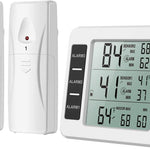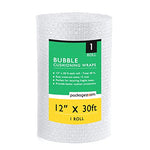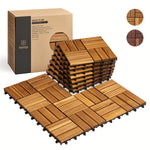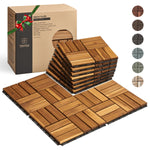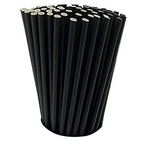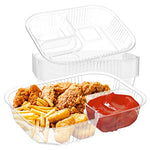You have no items in your shopping cart.
Learn how many cups are in a pound for various ingredients such as flour, sugar, and butter. This comprehensive guide will help you become an expert in the kitchen.
Introduction
Cooking and baking require precision, and that means measuring ingredients accurately. While some recipes list ingredients in pounds or ounces, others may list them in cups. So, it's essential to know how to convert measurements from one unit to another. In this article, we will focus on converting pounds to cups for various ingredients. We'll also discuss some tips and tricks to make measuring ingredients more manageable.
Electric Can opener New, One Touch Automatically open the can for Any Size Smooth Edge and Safe Click the picture to view price
How Many Cups in a Pound?
The answer to this question depends on what you are measuring. Different ingredients have different weights and densities, which means they take up different amounts of space. For example, a pound of flour will take up more space than a pound of sugar. So, here is a breakdown of how many cups are in a pound for some of the most commonly used ingredients in the kitchen.
Flour
When measuring flour, a pound will equal approximately 3 1/3 cups. However, it's essential to note that the type of flour you are using can affect this measurement. For example, all-purpose flour and cake flour have different densities, so a pound of cake flour will take up more space than a pound of all-purpose flour.
Sugar
A pound of granulated sugar is equal to approximately 2 1/4 cups. Brown sugar, on the other hand, is denser than granulated sugar, so a pound of brown sugar is equal to approximately 2 2/3 cups.
Butter
One pound of butter is equal to approximately 2 cups.
Water
A pound of water is equal to approximately 2 cups.
Honey
A pound of honey is equal to approximately 1.5 cups.
Chocolate Chips
One pound of chocolate chips is equal to approximately 3 cups.
Tips and Tricks for Measuring Ingredients
Measuring ingredients accurately is essential to the success of your recipe. Here are some tips and tricks to make measuring ingredients easier.
Use a Scale
Using a kitchen scale is the most accurate way to measure ingredients, especially when working with recipes that list ingredients in pounds or ounces.
Use the Dip and Sweep Method
When measuring ingredients using measuring cups, use the dip and sweep method. This method involves dipping the measuring cup into the ingredient and then sweeping off any excess with a straight edge.
Level the Ingredient
When measuring dry ingredients, always level off the top of the measuring cup with a straight edge, such as a knife or spatula.
Be Consistent
When measuring ingredients, be consistent with your measuring method. For example, if you use the dip and sweep method for flour, use the same method for sugar and other dry ingredients.
Don't Pack Ingredients
When measuring dry ingredients, don't pack them into the measuring cup. This can lead to inaccurate measurements.
Fluff and Scoop Ingredients
When measuring ingredients such as flour, fluff the ingredient first to break up any clumps and then scoop it into the measuring cup.
Dish Drying Rack Mueller Personal Blender
FAQs
1. Can I Use a Measuring Cup to Measure
Certainly! Here are some more FAQs and their answers regarding measuring ingredients in cups and pounds.
2. Can I Convert Cups to Pounds?
Yes, you can convert cups to pounds by using the density of the ingredient you are measuring. To do this, you'll need to know the weight of one cup of the ingredient. Then, you can use this conversion factor to convert the number of cups to pounds.
3. Is Measuring Ingredients by Weight More Accurate Than by Volume?
Yes, measuring ingredients by weight is more accurate than measuring by volume. This is because the weight of an ingredient is not affected by its volume. However, measuring by weight can be more time-consuming and requires a kitchen scale.
4. Why Is It Important to Measure Ingredients Accurately?
Measuring ingredients accurately is crucial to the success of your recipe. Too much or too little of an ingredient can affect the texture, flavor, and overall quality of the dish.
5. Can I Use a Liquid Measuring Cup to Measure Dry Ingredients?
While you can technically use a liquid measuring cup to measure dry ingredients, it's not the most accurate method. Liquid measuring cups are designed to measure liquids, and their measurements can be affected by the shape of the cup and how the ingredient is poured.
6. How Do I Convert Ounces to Cups?
To convert ounces to cups, you'll need to know the weight of one cup of the ingredient. Then, you can use this conversion factor to convert the number of ounces to cups. For example, one cup of all-purpose flour weighs approximately 4.5 ounces, so 8 ounces of flour is equal to approximately 1.8 cups.
Explore our premium selection of trash bags designed to meet all your waste disposal needs. Whether you're looking for durable kitchen trash bags or heavy-duty options for industrial use, we've got you covered. Click the green button to discover high-quality bags that combine strength and reliability. Make your waste management hassle-free with our top-notch collection
Conclusion
Knowing how to convert pounds to cups is an essential skill for any home cook or baker. While it can be confusing at first, understanding the weight and density of different ingredients can help you measure them accurately. Remember to use a scale for the most precise measurements, and be consistent with your measuring method. With these tips and tricks, you'll be measuring ingredients like a pro in no time.
15 Gallon - Tall Kitchen Bags

Introducing our 15 Gallon Tall Kitchen Bags! These bags are perfect for everyday kitchen waste and feature a strong and reliable design.
- Capacity: 15 gallons
- Dimensions: 15" x 9" x 30"
- Designed for kitchen use
- Resistant to tears and leaks
"These bags have made my kitchen cleanup a breeze. Highly recommend them!"
- Emily Jarred
"I've been using these bags for months now, and they never disappoint. Great quality!"
- Michael Anderson
39 Gallon - Heavy-Duty Trash Bags

Introducing our 39 Gallon Heavy-Duty Trash Bags! These bags are perfect for handling larger loads of trash and are built to resist tears and leaks.
- Capacity: 39 gallons
- Dimensions: 23" x 10" x 39"
- Heavy-duty construction for extra strength
- Thick material to prevent leaks
"These bags are the best I've ever used. They can handle even the toughest trash."
- Lewis Martinez
"I'm impressed by the durability of these bags. They never fail to hold up, even when filled to the brim!"
- Jessica Roberts
33 Gallon - Heavy-Duty Trash Bags

Introducing our 33 Gallon Heavy-Duty Trash Bags! These bags are designed to handle heavy loads of trash, making them ideal for residential and commercial use.
- Capacity: 33 gallons
- Dimensions: 23" x 17" x 46"
- Extra-strong construction for durability
- Thick material to prevent leaks
"I've never had a bag that could handle so much trash. These bags are a game-changer!"
- Samantha Turner
"I run a small restaurant, and these bags are perfect for our needs. They're strong, reliable, and affordable!"
- David Patterson
55 Gallon - Contractor Trash Bags

Introducing our 55 Gallon Contractor Trash Bags! These bags are designed to handle heavy, bulky trash and are commonly used in construction and renovation projects.
- Capacity: 55 gallons
- Dimensions: 22" x 16" x 55"
- Heavy-duty construction for demanding tasks
- Durable and tear-resistant
"These bags are an absolute lifesaver on our construction sites. They can handle anything we throw at them!"
- Mark Thompson
"I've used many different contractor bags, and these are by far the best. They never let me down!"
- Rachel Collins






